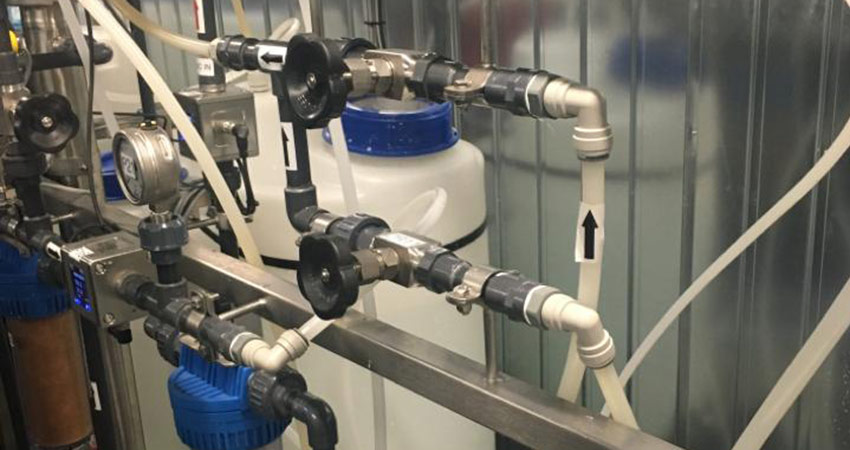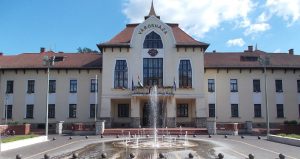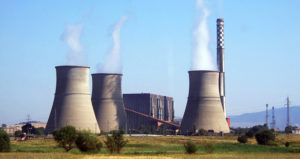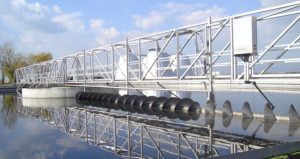Poland: Pilot recovers salt and clean water from coal mine wastewater

- 29 October 2019
-
 Adriaan van Hooijdonk
Adriaan van Hooijdonk
Share article:
The first results of a combination of nanofiltration, reverse-osmosis, and electro dialysis technology used in a ZERO BRINE pilot plant at the Bolesław Śmiały coal mine in Poland to clean saline wastewater from the mine and recover salt are positive. The big challenge now is to find companies willing to invest in a full scale wastewater treatment plant.
Every year wastewater is dumped from Polish mines into rivers and freshwater basins leaving four million tonnes of salt behind. This salty wastewater (brine) is putting great environmental pressure on Poland’s rivers. The raising salinity of the Vistula River, for example, which provides 55 per cent of the country’s freshwater needs, has resulted in industrial and agricultural losses estimated at 100-250 million dollar annually.
The project in Poland, one of the four EU ZERO BRINE-projects, coordinated by the Dutch Delft University of Technology, not only aims to recover clean water and salts, but all elements in the feed water, including magnesium hydroxide – commonly used in heat-resistant materials – and a calcium-rich solution that can be used as a de-icing liquid. The objective is to sell the remaining saline concentrate or use it for salt crystallization.
Fieldtrip
On 8 October, press, government officials, industrial and environmental experts, visited the Bolesław Śmiały coal mine to see the ZERO BRINE technology, operated by the Silesian University of Technology (SUT). The TU Delft was presented by ZERO BRINE coordinator Roelof Moll and Luuk Rietveld, professor of Drinking Water & Urban Water Cycle Technology. According to lecturer Grzegory Gzyl from the Central Mining Institute, Department of Water Institute, in Katowice the general public in Poland doesn’t consider the pollution of rivers with salt as a big problem. The water is crystal clear so people can swim and recreate in it. They don’t seem to bother that there is no water life in parts of the river, like algae, plants and fish. Only professional fisherman are upset and try, until now without results, to get compensation money from the coal mine companies.
Deadline
The biggest driver to stop the pollution is the deadline of the EU Water Frame Work Directive in 2027. After that date discharging salted wastewater in rivers is a no-go, expects Gzyl. Poland only has one industrial-scale desalination plant in Czerwionka-Leszczyny which produces around 70,000 t/year of salt from coal mine water. The plant does not use chemical treatment. At this moment the low salinity coal mine water is pre-concentrated by Reverse Osmosis (RO). Then, after mixing with more saline coal mine water, it is subjected to further concentration by Vapour Compression (VC), and salt is obtained in a VC crystallizer.
High energy consumption
The current
technology costs a lot of energy and has limited salt recovery due to the
presence of bivalent contaminants such as magnesium and calcium, which are not
removed from the feed stream. The existing technology also does not allow the
recovery of valuable raw materials, such as magnesium hydroxide.
ZERO BRINE aims to provide a technological solution of the saline wastewater
problem for the coal mining industry. Two blue sea containers at the terrain of
the Bolesław Śmiały coal mine are containing state of the art water technology
to achieve this goal. The feed – coal
mine water – after being pre-treated with decarbonization and ultrafiltration,
is subjected to a two-pass nanofiltration. Nanofiltration is a membrane method,
which allows separation of univalent ions – such as sodium and chlorides – from
bivalent ions – calcium, magnesium, sulphates. The nanofiltration unit thus
splits the coal mine water into two streams: salt-rich permeate and calcium and
magnesium-rich retentate. The retentate can be used in the recovery of
magnesium hydroxide.
Magnesium
Magnesium is a critical raw material officially listed by the European Commission as having high commercial value. Currently, Europe imports over 95% of its magnesium from China. The remaining calcium-rich solution could be used as a de-icing liquid. The nanofiltration permeate is concentrated in a hybrid reverse osmosis-electrodialysis system, which produces demineralized water of quality close to distilled water, highly saline concentrate, and the diluate, an essential commodity that can be used at the site. The highly saline concentrate could then be sold directly or used as a source for salt crystallization.
Initial results
The desalination experiments started in July 2019 and the initial results are promising. Though some modifications were required to the pre-treatment and decarbonisation unit, it is confirmed that nanofiltration can split the coal mine wastewater into a sodium-chloride rich stream suitable for further concentration and the magnesium-rich stream suitable for magnesium hydroxide recovery. The projected energy consumption in the production of concentrated brine is equal to 12 kWh/m3 of brine treated at 82.8% salt recovery versus circa 70% in existing technology. However, these results are only preliminary and still need to be confirmed and the process needs further optimization. The big challenge now is to find companies willing to invest in a full scale plant. This will be a challenge according to environmental experts who visited the pilot installation on 8 October, due to the payback time of 8-10 years of the investment.















